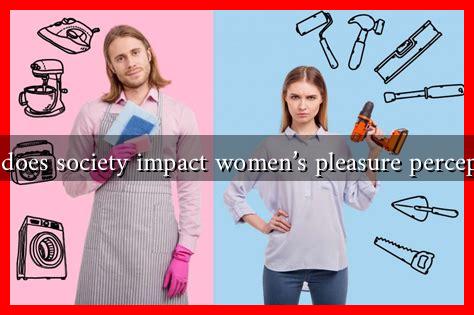-
Table of Contents
How Does Society Impact Women’s Pleasure Perceptions?
Women’s pleasure, particularly in the context of sexuality, has long been a subject of societal scrutiny and cultural interpretation. The perceptions surrounding women’s pleasure are deeply influenced by various societal factors, including cultural norms, media representation, education, and historical context. This article explores how these elements shape women’s understanding and experience of pleasure.
The Role of Cultural Norms
Cultural norms play a significant role in shaping perceptions of women’s pleasure. In many societies, traditional gender roles dictate that women should be modest and reserved about their sexual desires. This can lead to a range of consequences:
- Stigmatization of Female Desire: In cultures where female sexuality is viewed as taboo, women may feel ashamed or guilty about their desires, leading to a disconnect between their needs and societal expectations.
- Limited Expression: Women may suppress their sexual desires due to fear of judgment or ostracism, which can hinder their ability to experience pleasure fully.
- Impact on Relationships: Cultural norms can affect communication between partners, making it difficult for women to express their needs and desires.
For instance, in many conservative societies, women are often taught to prioritize their partner’s pleasure over their own, which can lead to a lack of sexual satisfaction and fulfillment.
Media Representation and Its Effects
The media plays a crucial role in shaping societal perceptions of women’s pleasure. From movies to advertisements, the portrayal of female sexuality can either empower or diminish women’s experiences. Key points include:
- Objectification: Many media portrayals reduce women to mere objects of desire, which can lead to a narrow understanding of pleasure that focuses solely on physical appearance.
- Unrealistic Standards: The depiction of women in sexual scenarios often sets unrealistic expectations regarding body image and sexual performance, which can negatively impact women’s self-esteem and pleasure.
- Empowerment Narratives: Conversely, some media representations celebrate female sexuality and agency, encouraging women to embrace their desires and seek pleasure on their own terms.
Research indicates that women who consume media that positively portrays female sexuality are more likely to have a healthy perception of their own pleasure (Source: JSTOR).
The Impact of Education
Education is another critical factor influencing women’s perceptions of pleasure. Comprehensive sex education can empower women by providing them with knowledge about their bodies and sexual health. However, many educational systems still fall short:
- Lack of Comprehensive Sex Education: In many regions, sex education is limited or non-existent, leaving women uninformed about their bodies and sexual rights.
- Focus on Reproduction: Traditional sex education often emphasizes reproduction over pleasure, neglecting the importance of sexual enjoyment and consent.
- Encouraging Open Dialogue: Programs that promote open discussions about pleasure can help dismantle stigma and encourage women to explore their desires.
For example, countries that implement comprehensive sex education programs report higher levels of sexual satisfaction among women (Source: WHO).
Historical Context and Its Legacy
The historical context also plays a significant role in shaping contemporary perceptions of women’s pleasure. The legacy of patriarchal systems has often marginalized women’s voices and experiences:
- Historical Repression: Throughout history, women’s sexuality has been repressed, leading to a cultural narrative that often dismisses or vilifies female pleasure.
- Feminist Movements: The feminist movements of the 20th and 21st centuries have worked to reclaim women’s pleasure, advocating for sexual rights and empowerment.
- Changing Narratives: As society evolves, so do the narratives surrounding women’s pleasure, with increasing recognition of the importance of consent and mutual satisfaction.
Conclusion
In conclusion, societal influences significantly impact women’s perceptions of pleasure. Cultural norms, media representation, education, and historical context all contribute to shaping how women understand and experience their desires. As society continues to evolve, it is crucial to foster an environment that encourages open dialogue about pleasure, promotes comprehensive education, and challenges outdated norms. By doing so, we can empower women to embrace their sexuality and pursue pleasure without stigma or shame.

